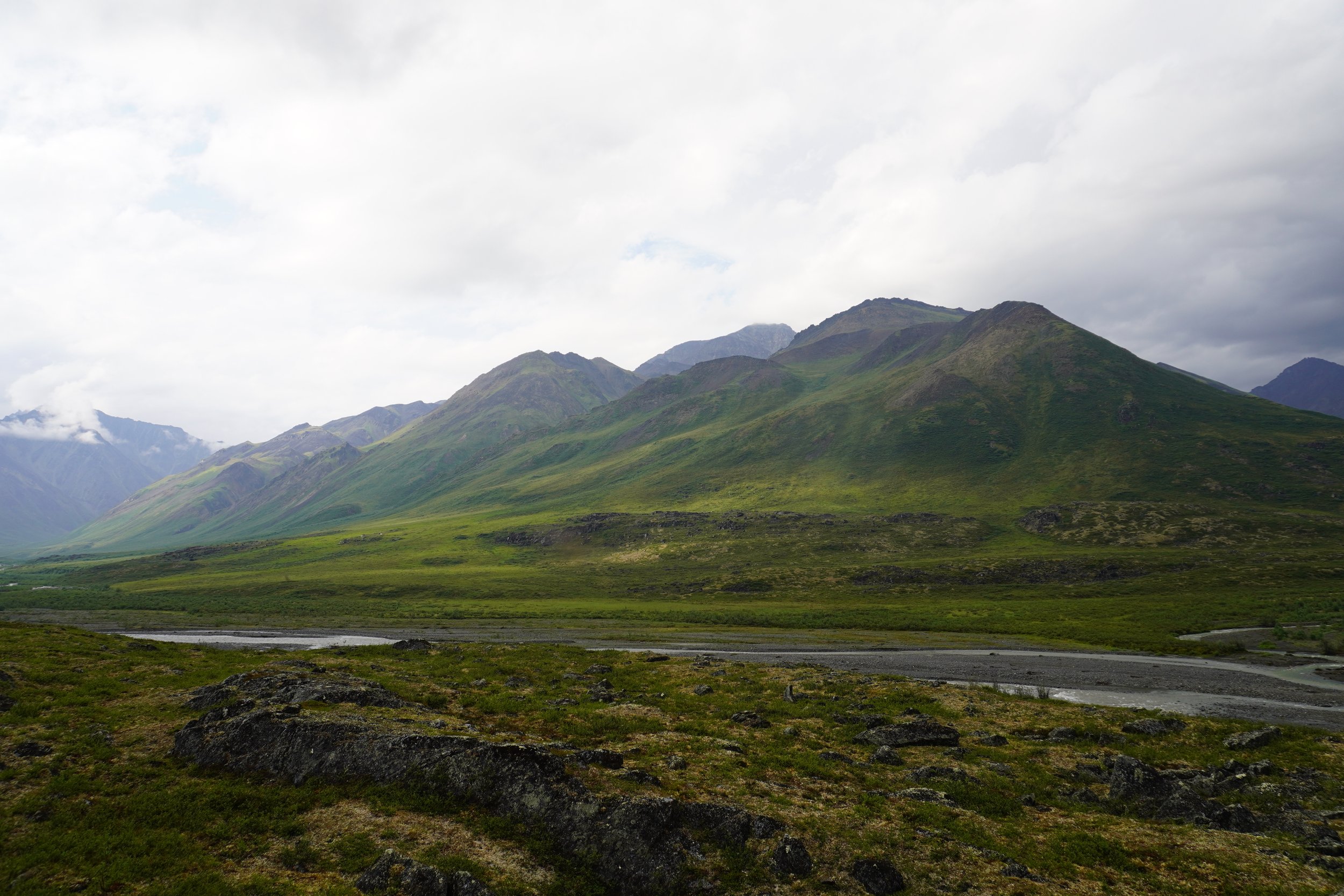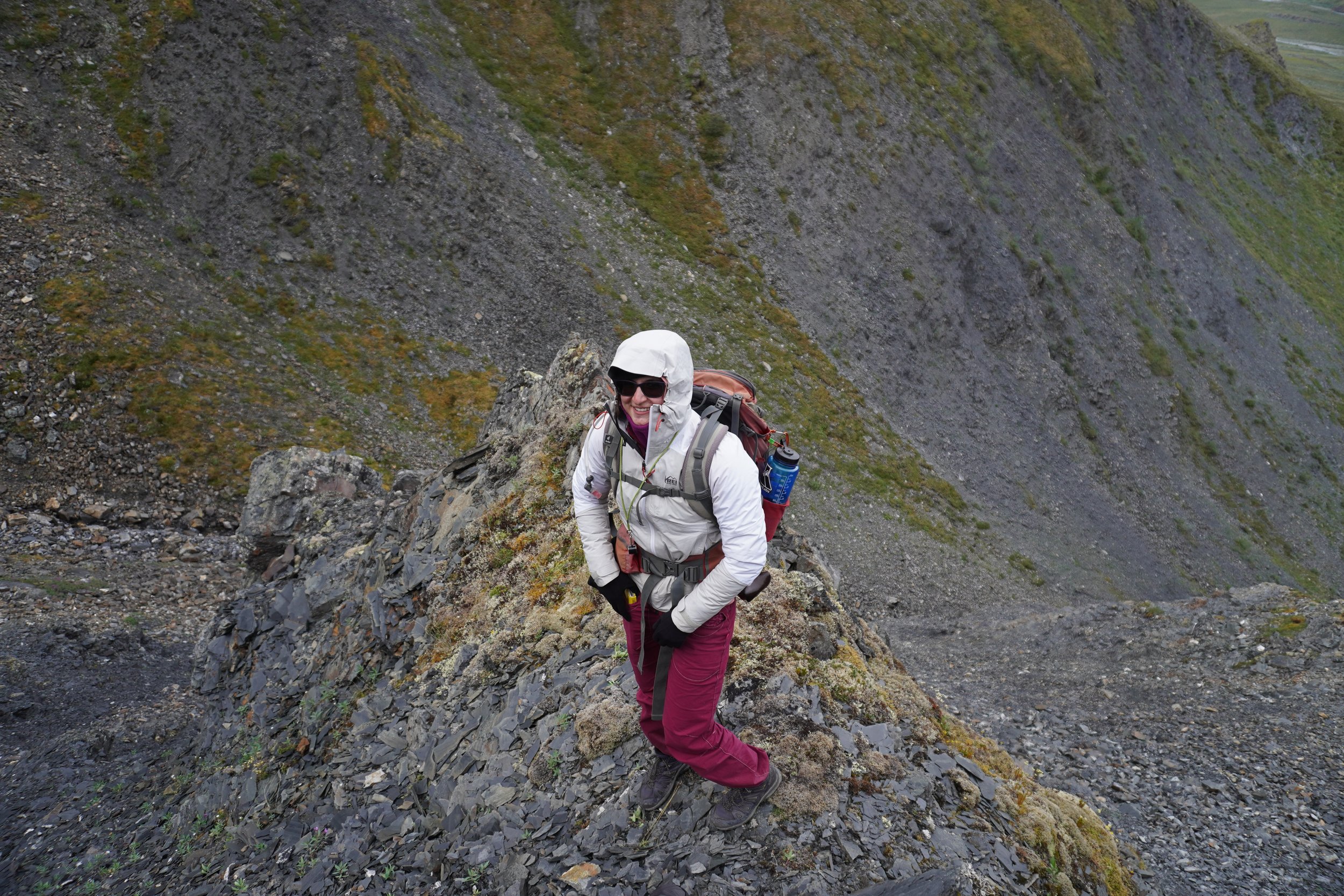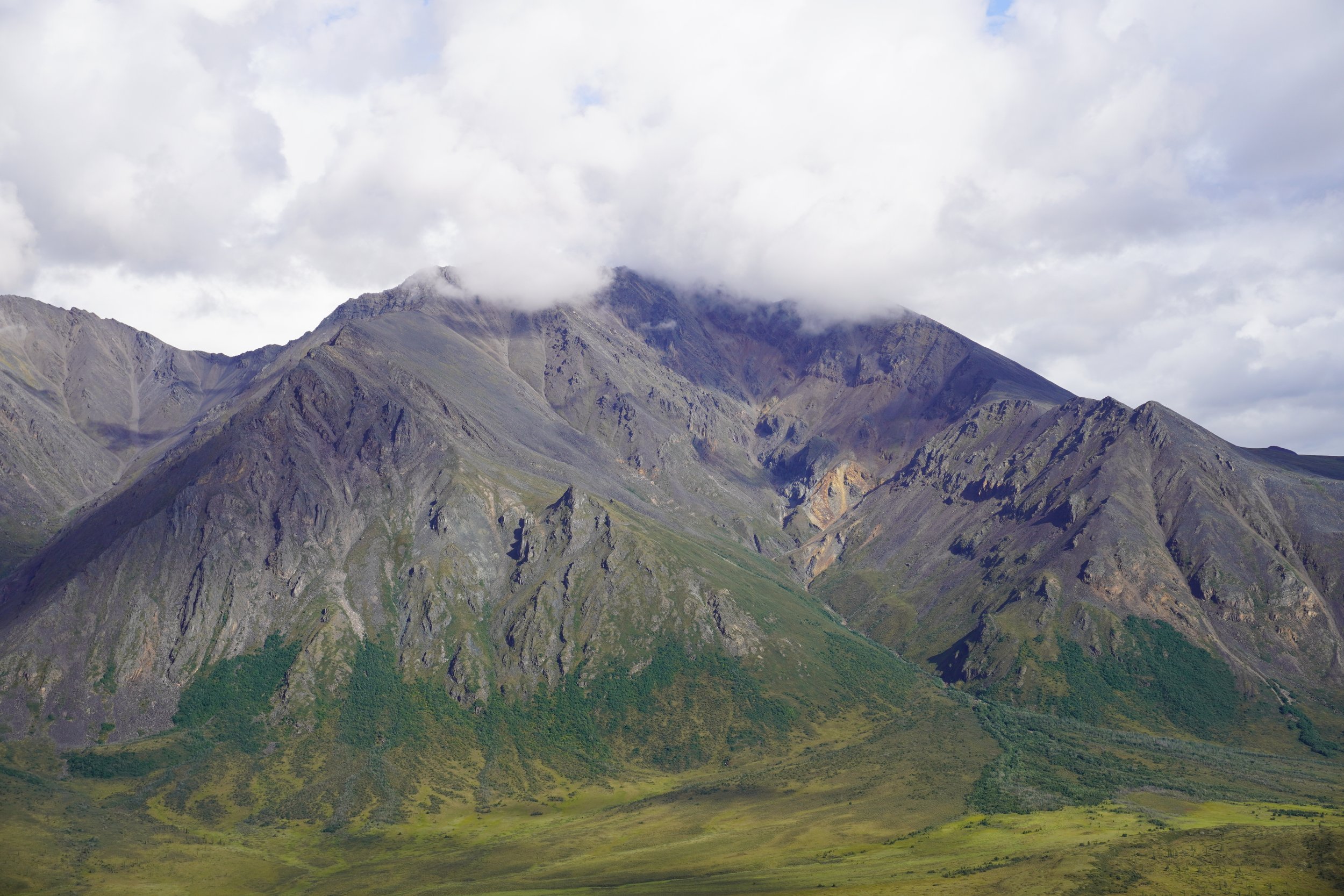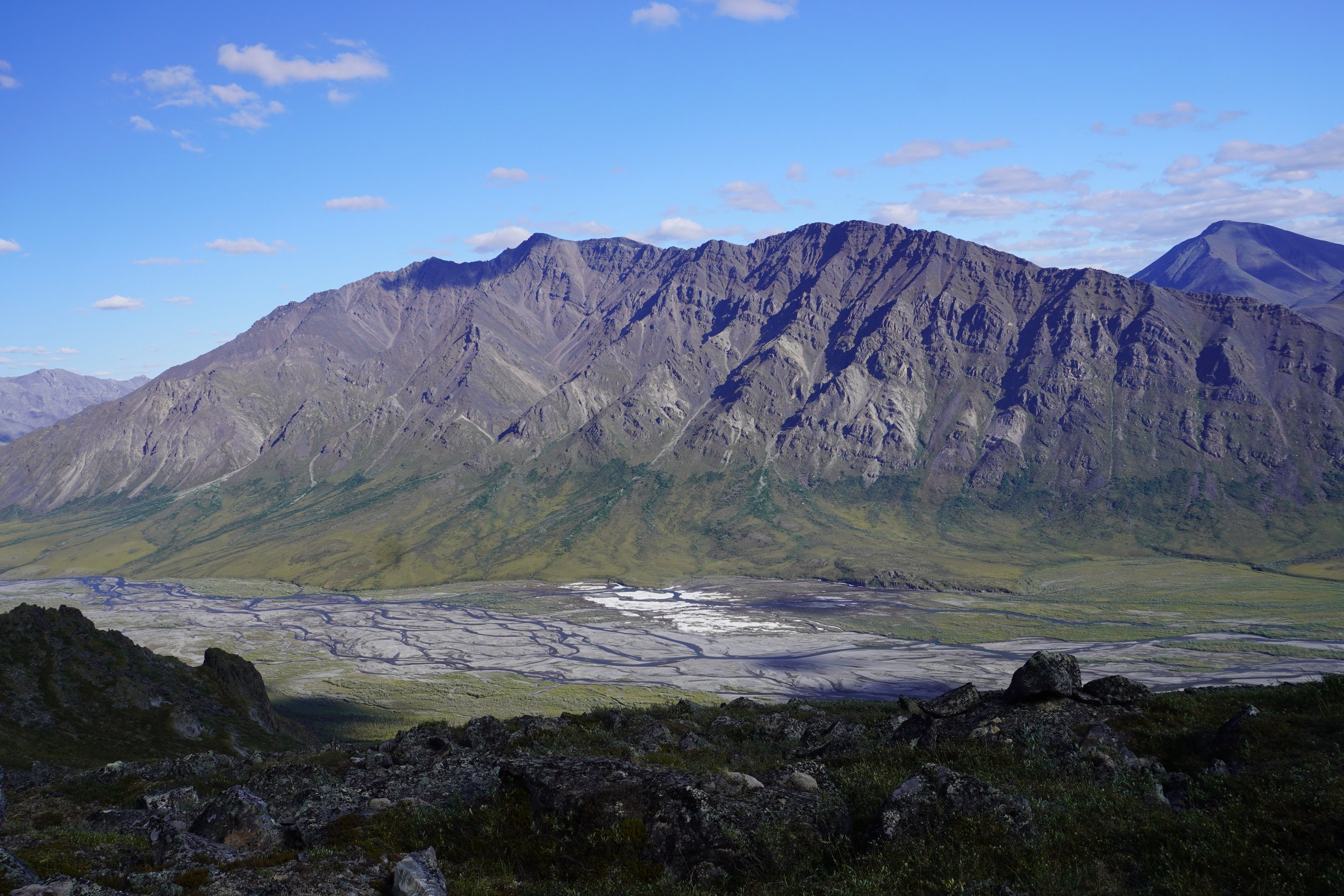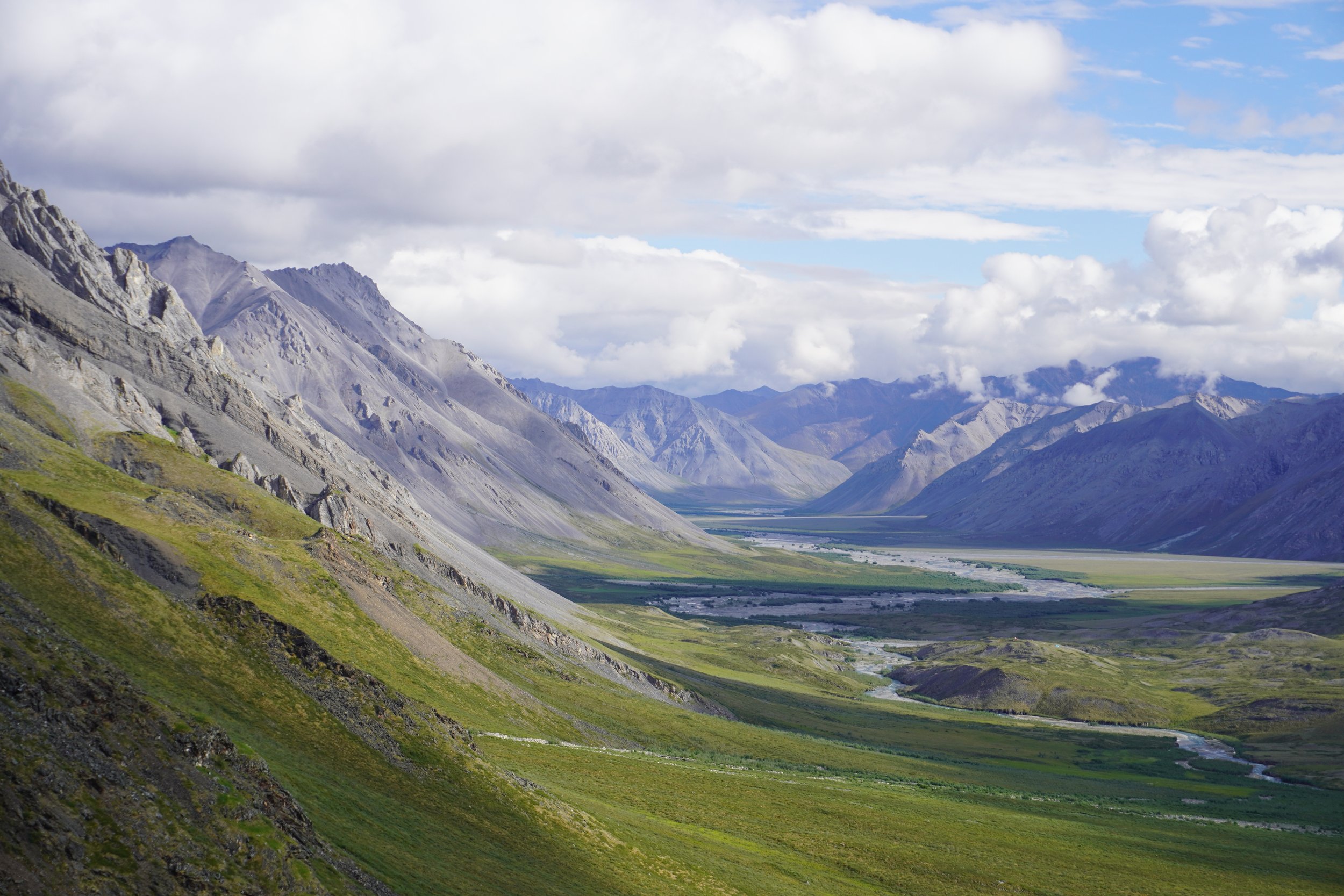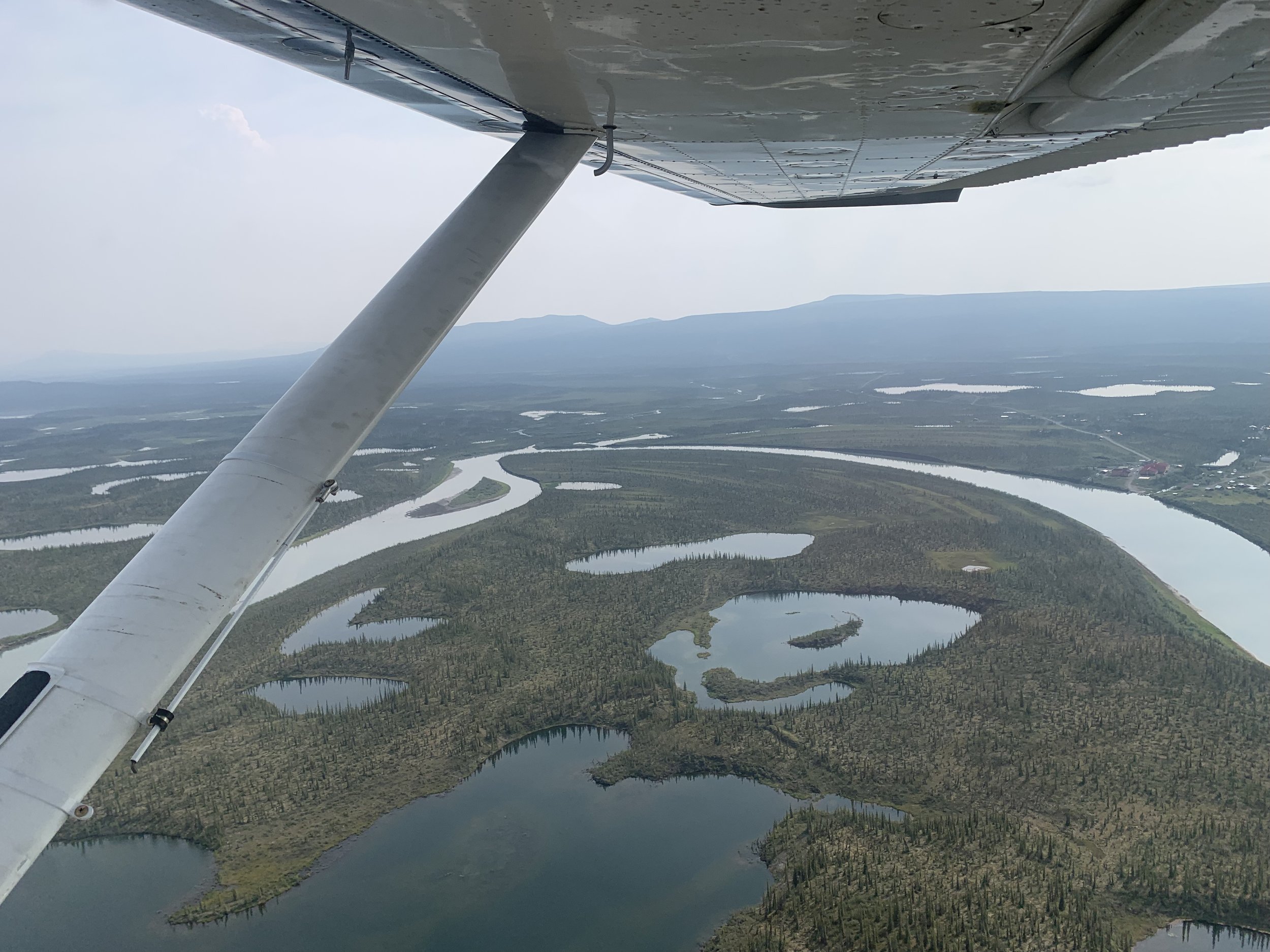Stratigraphy and Provenance of the Kekiktuk Conglomerate and Associated Carboniferous Units in the Northeastern Brooks Range of Alaska
At Dartmouth, I was part of a team exploring the Devonian-Carfoniferous tectonic history of the northeastern Brooks Range of Arctic Alaska, and specifically a regional transition from a contraction to extension. My contribution included the first investigation of the Kekiktuk Conglomerate and associated units in the field area, the headwaters of the Sheenjek River in the Brooks Range. These units were deposited during this critical tectonic transition, and I performed a paleoenvironmental analysis which helped shed light on the larger setting in which these rocks were deposited. My work included field mapping, measuring and analyzing stratigraphic section, preparing samples in the lab for thin section and other analyses (geochronology and geochemistry), and a petrographic analysis.
This work was in collaboration with Geordi Geier, Alec Lockett, and Justin Strauss, among others, during my time in the Sedimentary Geology, Tectonics, and Historical Geobiology Group. I presented a poster of this work at the 2023 GSA Cordilleran Section Meeting as well as the 2023 Wetterhahn Science Symposium.
Measured sections of the Kekiktuk Conglomerate, equivalent Chandalar Unit, and the underlying Double Mountain Complex in the upper headwaters of the Sheenjek River, NE Alaska
Abstract
The timing and rate of opening of most modern oceans is well-known, owing to the wealth of magnetic data, radiometric dating, mapping, and reconstructions. However, the opening of the Arctic Ocean is still poorly understood, in part due to a lack of geophysical data from the Arctic Ocean as well as a dearth of modern bedrock mapping in the circum-Arctic. A key to better understanding Arctic Ocean evolution is a greater understanding of the transition from a passive margin to subduction zone along the northern and western margin of North America during the Devonian-Carboniferous. In the Arctic Alaska Chukotka terrane of northern Alaska and Yukon, Canada, this transition includes a poorly understood shift from contraction back to extension and eventual passive margin subsidence, most of which is recorded in the Upper Devonian-Lower Mississippian Endicott Group of the Brooks Range and North Slope subsurface. This study provides the first detailed investigation of the Mississippian Kekiktuk Conglomerate of the Endicott Group in the headwaters of the Sheenjek River, northeastern Brooks Range, Alaska. During the summer of 2022, we mapped exposures of the Kekiktuk Conglomerate, as well as an equivalent informal unit referred to here as the Chandalar unit, in three distinct thrust sheets. We also measured stratigraphic sections and collected samples for petrographic analysis of the Kekiktuk Conglomerate, Chandalar unit, and an informal unit overlying the Chandalar unit, herein called the Double Mountain complex. Based on the stratigraphic sections, samples, and mapping, the depositional environment of the units was determined: the Kekiktuk Conglomerate, Chandalar unit, and Double Mountain complex were deposited in a transgressive fluvial coarse braided stream to delta complex. This paleoenvironmental analysis suggests an active tectonic setting and provides context for passive to active margin transition.
Photos from the field!
